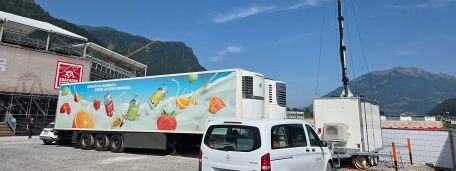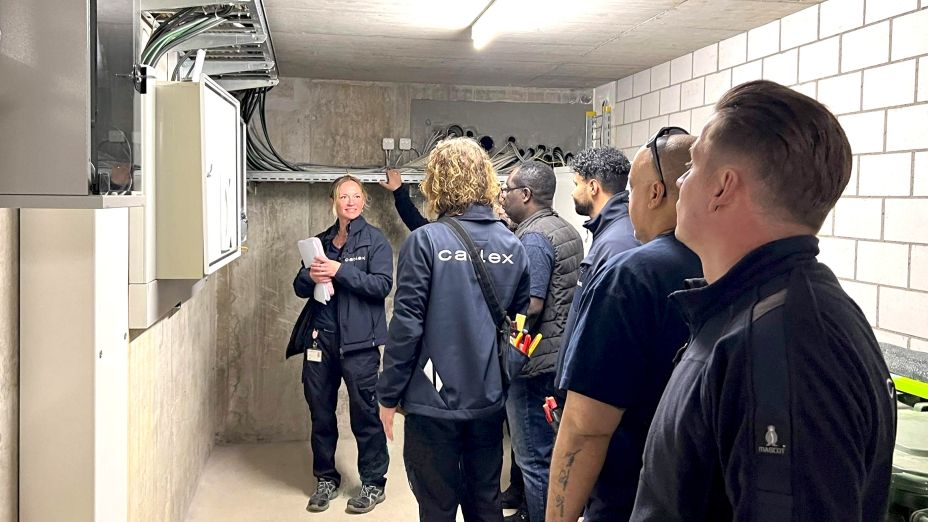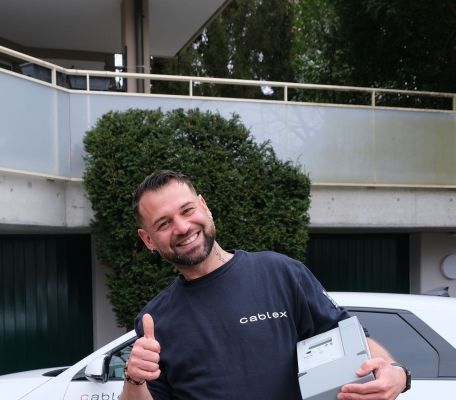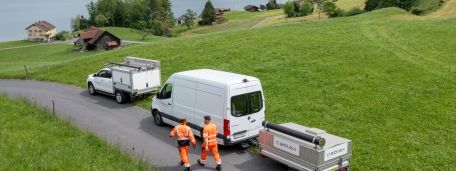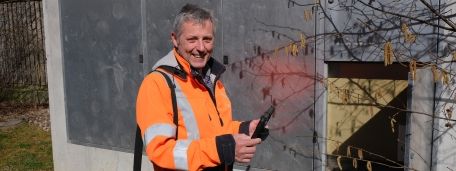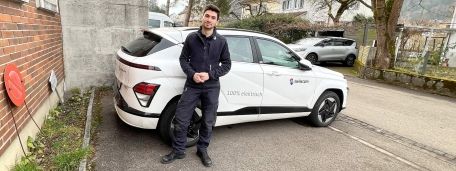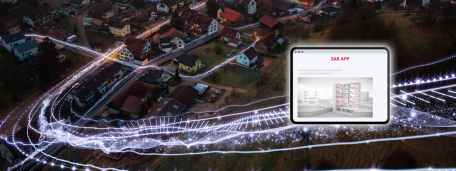
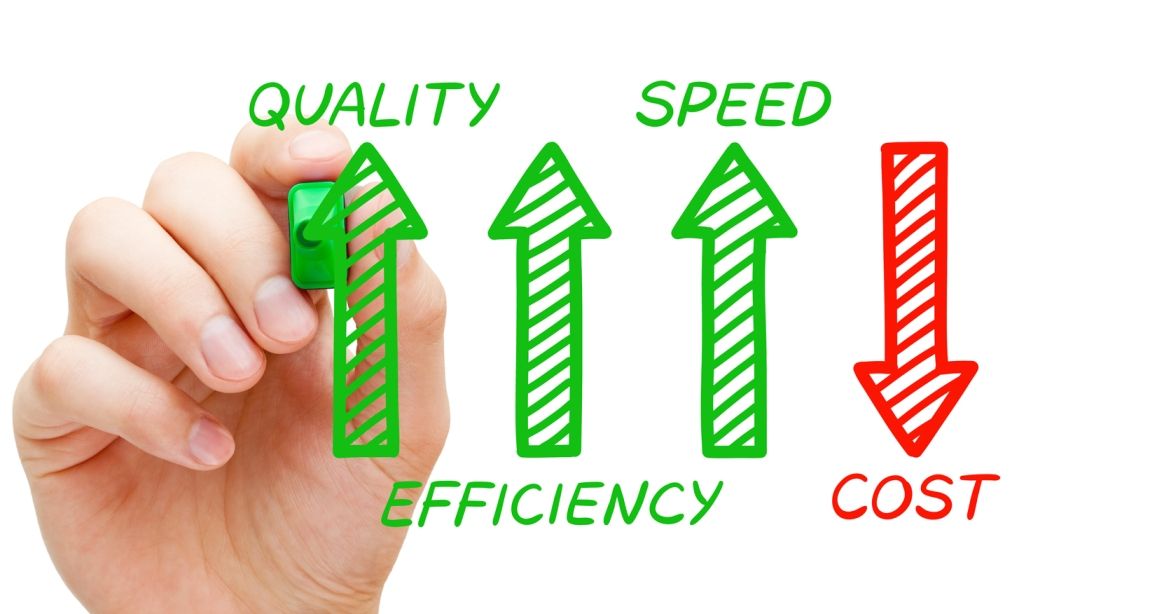
The FTS business unit wants to fully exploit the optimisation potential in the order documentation. Digital solutions are to help achieve the newly-defined target process.
But let’s first of all begin with the definition of some central terms and processes to make it easier to understand the subject matter as a whole:
Lot:
In the FTTS/B rollout, Swiss municipalities will be upgraded with optical fibre. Here, a lot represents a sub-project of the respective upgrade. It refers to the supply of a region within the municipality to be upgraded with an optical fibre main cable that comes from the exchange.
Logical acceptance:
During the logical acceptance, Swisscom checks the data inventory to verify whether cablex, as the contractor, documented the work in the field correctly and mapped it in the system accordingly. This logical acceptance is performed for every lot.
Physical acceptance:
The physical acceptance is carried out per municipality after the successful logical acceptance of all lots. A certain number of installations (mCAN and XGS-PON locations) are checked on-site according to a precisely-defined acceptance report. If an upper limit of mistakes is exceeded, the lot is rejected.

This means...
If, for example, cablex is commissioned by Swisscom to connect a municipality with optical fibre, then at the end, the individual lots of the network construction project must satisfy Swisscom's requirements at a logical and physical level. The best thing is to accomplish this at the first test—which is the standard at cablex. That is also why there is talk about the goal: "First time right".
Step 1 of the process optimisation—analysis of the actual status.
Generally, cablex has agreed with their customer Swisscom that registration for the logical acceptance must take place within 20 days after completion of the work in the field. This throughput time is not complied with and considerably exceeded in most cases. Furthermore, the results of the logical acceptance are not satisfactory, because the documentation often turns out to be incomplete.
Exceeding the 20-day throughput time also has an impact on the customer, Swisscom: There are fluctuations in the work load. Phases with an extraordinarily high demand for testing, and phases with a low volume of documentation alternate and generate an unbalanced workload. This is not in line with the uniform workload—neither for cablex nor Swisscom— envisaged in the rollout in order to handle high volumes efficiently and on time.
Furthermore, the current success rate of the logical acceptance is not satisfactory and above all does not satisfy the quality standards that the FTS business unit and cablex set for themselves. This is exactly where the “process optimisation” project comes in!
Data collections supplied additional findings.
The actual process was analysed together with the specialists from cablex who participate in the process. The processing time and frequency of the respective tasks were determined based on experience. Problems were also pointed out and their causes located in today’s way of working.
The analysis of the data also showed that the success rate of the first logical check (first time right) is very low and is currently only around 30 per cent. What’s more, the contractually-defined time limit of 20 days for the registration for the logical acceptance is clearly exceeded. This currently happens after 70 days on the average.
Moreover, the data analysis showed when checks take place, why these checks lead to corrections and how much time was required for this. In addition, the analysis of the actual process revealed that the lots were checked four to five times within the process. Some checks were carried out twice and were nevertheless not able to achieve the required quality objectives related to the documentation in order to pass the logical acceptance by Swisscom. These multiple checks within the process also contributed to increasing the processing time and hence the process costs as well.
The important thing in this connection is:
The delay to the logical acceptance has no impact on the end customer. The service can be obtained by the customer on time and with perfect quality. The optimisation requirement here refers exclusively to the documentation of the executed work vis-a-vis Swisscom as the customer!
Step 2 – Definition of the target process.
The necessary tasks were defined, and non-value-creating as well as duplicated activities were removed from the process in an additional workshop together with a multi-regional team made up of specialists from the FTS business unit. The newly-defined target process was modelled and put on paper. The optimisation potential was clearly visible when the newly developed process was compared with the current process. The self-declared goal of the business unit is naturally to fully exploit this potential.
As one of the measures for increasing quality, FTS decided to create a dedicated position for final checking of the documents. In the future, this employee will focus exclusively on checking the correctness and completeness of the documentation of the lots. Previously, this job was in the area of responsibility of the site manager or technical administrative assistant—in addition to the many other tasks.
At the same time, thought was given to the extent to which digital solutions could simplify the achievement of the target process. That way, it would be conceivable, for example, for several manual processes to be dropped. In addition, the digital solution ought to provide a way to acknowledge and track individual operations from which it would later be possible to derive the status of a lot and the processes inside the individual process steps. Solutions that prevent an incompletely filled-in document from being submitted are also being checked.
Step 3 – Search for suitable software.
The process is to be supported and the optimisation potential exploited in the best possible way through the use of suitable software. To do this, specifications were written on the basis of the defined target process and the requirements of the employees of the FTS business unit. This is now being used to look both externally and internally for a suitable solution.
The basis for order processing is the newly-introduced SAP system (SAP 4 HANA) introduced for cablex 2021. The requirements from the defined target process that cannot be covered by the new SAP software are to be fulfilled by a suitable additional solution.
Patricio Grille Abad is in charge of this project. He put himself at the disposal of cablex Communications in a consulting function as a technical expert for this contribution. He answers the question about the next steps as follows:
“After analysing the incoming offers and choosing the software, there will be a test phase in which necessary adaptations will be carried out in cooperation with the selected supplier. After training the users, we expect to be able to use the new system productively as of autumn 2021.”


